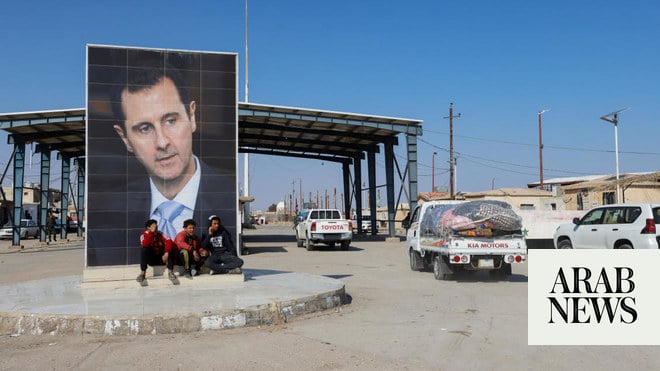
Syria, its borders, and inland corridors will figure high on the list of topics US President Joe Biden is expected to discuss at meetings with Turkish President Recep Tayyip Erdogan and Russian President Vladimir Putin.
Biden is slated to meet with Erdogan on Monday in Brussels and with Putin on Wednesday in Geneva.
Even though Biden will likely focus on delivering humanitarian relief to Syrians, he will also shed light on geopolitical grievances between Washington, Moscow and Ankara. This comes as the international decision for cross-border aid mechanism in Syria nears its expiry date in July.
As a key backer of the Syrian regime, Moscow equates the opening of “border crossings” with stabilizing “inland corridors.” It does so to push geopolitical rivals into opening the embattled country’s “economic arteries,” breaking the Syrian regime out of its isolation, kickstarting reconstruction efforts and moving the political process forward.
Russia and UNSC 2165
After a fierce diplomatic row, Moscow agreed to pass UN Security Council (UNSC) Resolution 2165 in 2014.
The UNSC unanimously adopted the resolution that authorizes the UN to deliver cross-border humanitarian aid through Jordan, Turkey and Iraq without resorting to the Syrian government, and establishes a monitoring mechanism to monitor implementation.
Although Damascus controls about 65% of the country, it only has independent control over 15% of the battle-weary nation’s borders. The remaining entry points are either run by allies or rivals.
Twenty-five percent of Syria is held by US-backed forces east of the Euphrates River, and Turkey-backed armed factions hold about 10 percent. Syria has 19 official entry ports, most of which are being operated by the de facto forces on the ground.
What about the US?
With the Biden administration assuming office earlier this year, it was clear that aid for Syria topped its priorities, not the political and military files.
US Secretary of State Anthony Blinken chose to chair a meeting last March to launch a campaign of support for the extension of Resolution 2165 instead of participating at the donor convention in Brussels.
“Unhindered access to Syrians is more important than ever – not only because of the growing humanitarian crisis but also because of the threat posed by COVID-19,” said Blinken at a UNSC briefing on the situation in Syria.
The top diplomat advocated renewing the authorization for aid delivery through the Bab al-Salam border crossing in Syria’s northwest borders with Turkey and al-Yaroubia border with Iraq, located in the northeast.
“Let’s reauthorize both border crossings that have been closed and reauthorize the one crossing that remains open. Let’s give ourselves more pathways, rather than fewer pathways, to deliver food and medicine to the Syrian people,” urged Blinken.
Inland corridors
Parallel to the “battle of border crossings” with foreign states, a hidden inner conflict over “inland corridors” is brewing between the three countries that control the zones of influence inside Syria itself.
The three zones have stabilized over the last year after significant changes and turmoil that started in 2011 when the conflict first erupted.
Apart from crossings that emerged from blockades, inland corridors have linked areas that were initially divided between the regime and opposition.
Later into the war, local corridors emerged between areas run by ISIS on the one hand and local administrations operated by the Kurdish People’s Protection Units (YPG) on the other. YPG territory then developed into an autonomous region with the US-backed Syrian Democratic Forces (SDF) as a de facto military.
According to Jusoor for Studies, over 15 border crossings exist in SDF and regime areas, at least five of which are considered official gateways for the trade of goods between the two. The Tayha crossing, located southwest of the city of Manbij, and Al-Hawara crossing, located east of the town of Tabqa, are viewed as the two most prominent crossings between the two sides.
These crossings are open and shut either according to military and security realities or according to the political mood of the regime and the SDF.
Barter season
Washington is chiefly interested in expanding and having border crossings, especially the Iraqi-Syrian al-Yaroubia gate, wide open. This will connect areas where its forces are present in both the Iraqi Kurdistan region and east of the Euphrates in Syria.
However, Turkey is interested in keeping its borders with Syria’s Idlib open and putting Syria’s northern Bab al-Salam border crossing back on the tradeline. Therefore, Ankara is not very thrilled at the idea of al-Yaroubia border crossing remaining open and having the Kurdish autonomous region in Syria further empowered.
Russia is not interested in opening new border crossings, but it is drawn to having domestic corridors up and running to pressure the UN and the West to work with Damascus.












